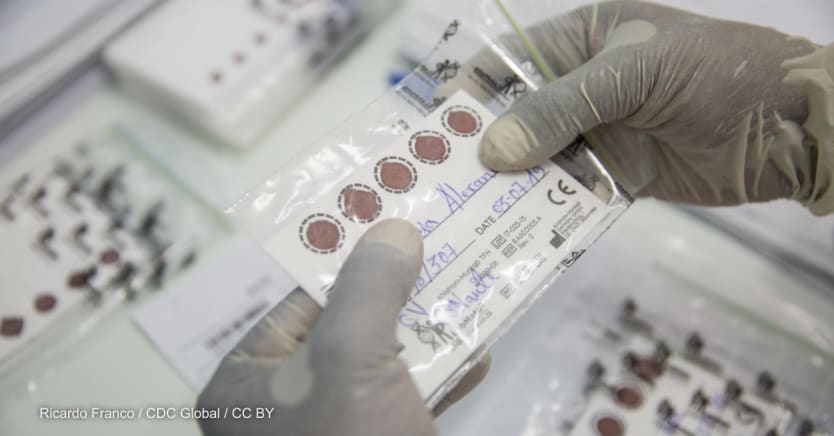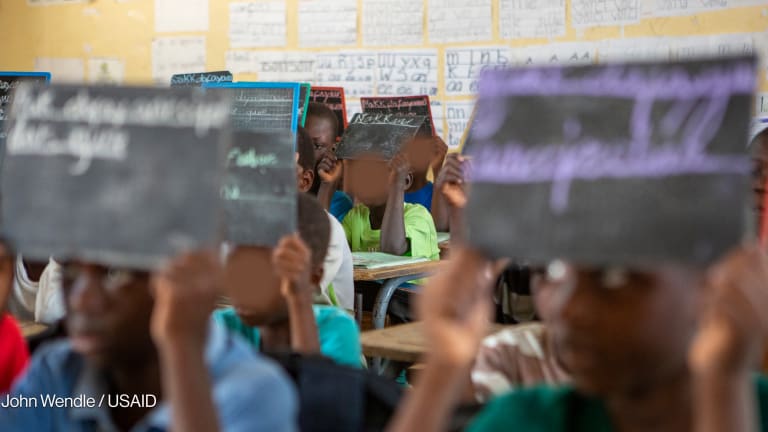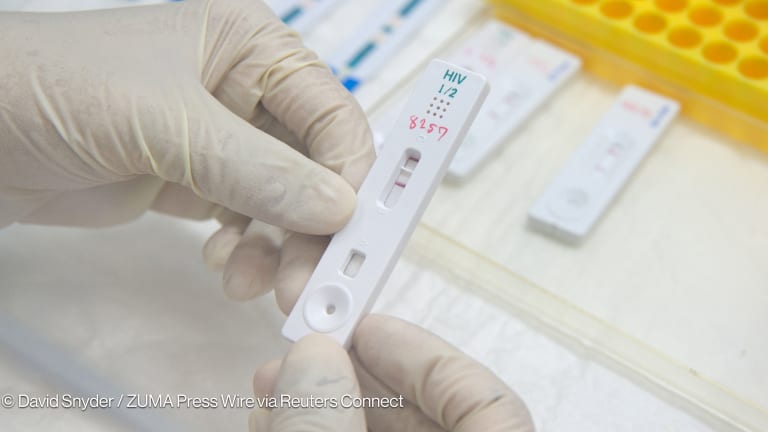
With public health leaders convening in Geneva this week for the annual World Health Assembly, there couldn’t be a better moment to reckon with the glaring disparities between the global haves and have-nots that have been laid bare by the COVID-19 pandemic.
Inequitable access to vaccines and therapeutics, poor public health messaging, and inadequate health care systems are just a few of the issues they’ll need to grapple with as they chart our way out of the pandemic and into a brighter future. And there couldn’t be a better time than now to hold these discussions. Because a brighter future, it seems, has become all too uncertain for the world’s most vulnerable children.
According to the latest data, since the start of the pandemic, upward of 10.4 million children have lost a primary or secondary caregiver to COVID-19. The surge of new variants has pushed this number to an almost unimaginable level. Not since the height of the HIV/AIDS pandemic have we seen such rapid and wholesale caregiver loss.
Layering health, social, and economic services to families can lessen children's vulnerabilities in the case of the loss of a caregiver.
—But while the United States has rightly spent billions of aid dollars globally to prevent COVID-19 deaths through vaccines and related health care, none of the funding provided thus far, by the U.S. or other donors, has been directed exclusively toward vulnerable children.
The question then becomes: How do we chart a better path forward for these children? How do we ensure these children not only survive but thrive? Clues to answering these questions can surely be found in lessons we learned addressing the needs of children affected by the HIV/AIDS crisis that swept Africa in the early 2000s.
During that crisis, we learned just how damaging losing a parent could be to a child's development. For example, research shows that these children are more vulnerable than they would be otherwise to abuse, violence, mental health problems, and severe distress.
We also learned from the HIV/AIDS crisis that most children who lose a parent to disease have extended families with whom they can live — and poverty often forces these families to make tough choices. Those of us working in public health at the time can remember meeting grandparents forced to choose between paying school fees or buying food. Not only did AIDS ravage these communities, but it tore at the very fabric of society.
It's no surprise then that the HIV/AIDS crisis led to a proliferation of residential care facilities throughout the African continent as low-income families, who didn't have money to care for more children, sent their kin away as a means of survival. Yet residential care can negatively impact a child’s physical, cognitive, and emotional development.
On the upside, we learned from the HIV/AIDS crisis that providing holistic support to children's extended families in the wake of parental death can help these families stay intact. Amid the AIDS response, U.S. policymakers recognized caregiver loss' impact on children. As such, the U.S. government, through the President's Emergency Plan for AIDS Relief, set aside at least 10% of funding to support orphans and vulnerable children affected by HIV/AIDS. Since then, research has shown that PEPFAR has strengthened local health systems and social services systems while ensuring that families can access critical support.
What if we doubled down on this type of support during the age of COVID-19? Layering health, social, and economic services to families can lessen children's vulnerabilities in the case of the loss of a caregiver. And if there is no one in the family able to care for the child, an alternative such as foster care can be considered as the next best option.
We don't have much time to waste to make the necessary pivot to funding these types of initiatives. As the death toll from COVID-19 mounts, it would be morally unacceptable for children to be pushed out of families and into residential care because it's a quick fix to a crisis.
As an international community, we need to do better for the next generation. It's thanks to collective action as a global community that the HIV/AIDS pandemic turned around. Although we can’t declare victory yet, what was once considered a catastrophe has become a manageable societal threat — a turnaround that is looked at as one of the most notable public health triumphs of our time.
We saw some momentum toward addressing the issue of vulnerable children during the White House’s recent COVID-19 summit, when the Biden administration, for the first time, publicly acknowledged the challenges these children face. However, acknowledgment isn’t sufficient when action is what’s urgently needed. The U.S. Congress must immediately provide the $5 billion to address COVID-19 globally, and the Biden administration should move swiftly to incorporate children in its overall global COVID-19 response plan while investing significant funds in PEPFAR and other existing platforms.
In the meantime, we can only hope that those attending this week’s World Health Assembly take note of some of these lessons learned as they plan. We have reason to be optimistic. In the lead-up to the event, WHO Director-General Dr. Tedros Adhanom Ghebreyesus said, “Sustained recovery will require more than ‘getting back on track’ and reinvesting in existing services and systems. We need a new approach, which means shifting priorities and focusing on the highest-impact interventions.”
What could be more important and impactful than properly looking after the world’s most vulnerable children? As parents and as lifelong child protection advocates, we believe that every young person deserves to grow up in a safe and nurturing family. If we look at children as the essential building blocks of society, the stakes become clear should so many children fall through the cracks.









